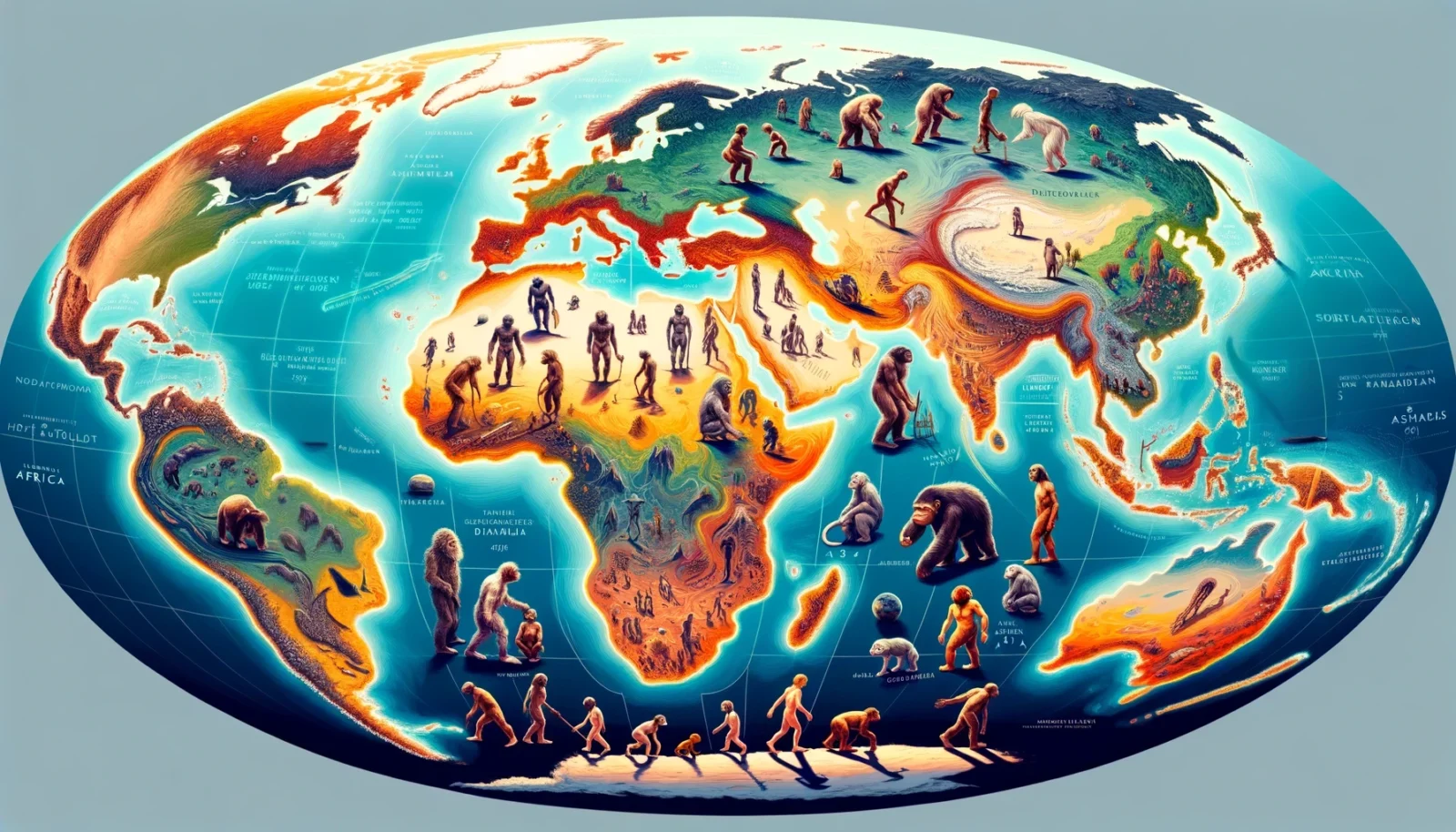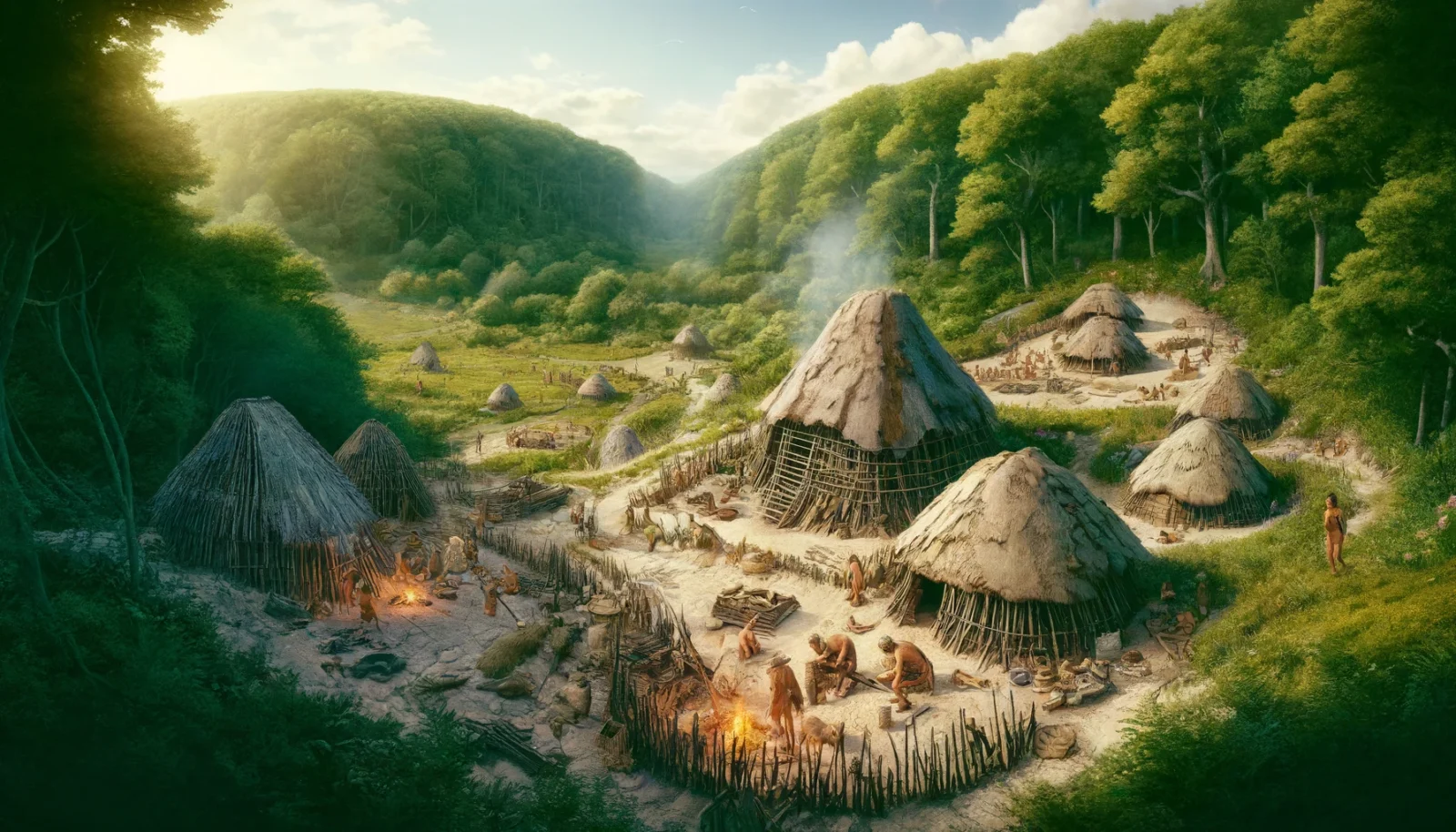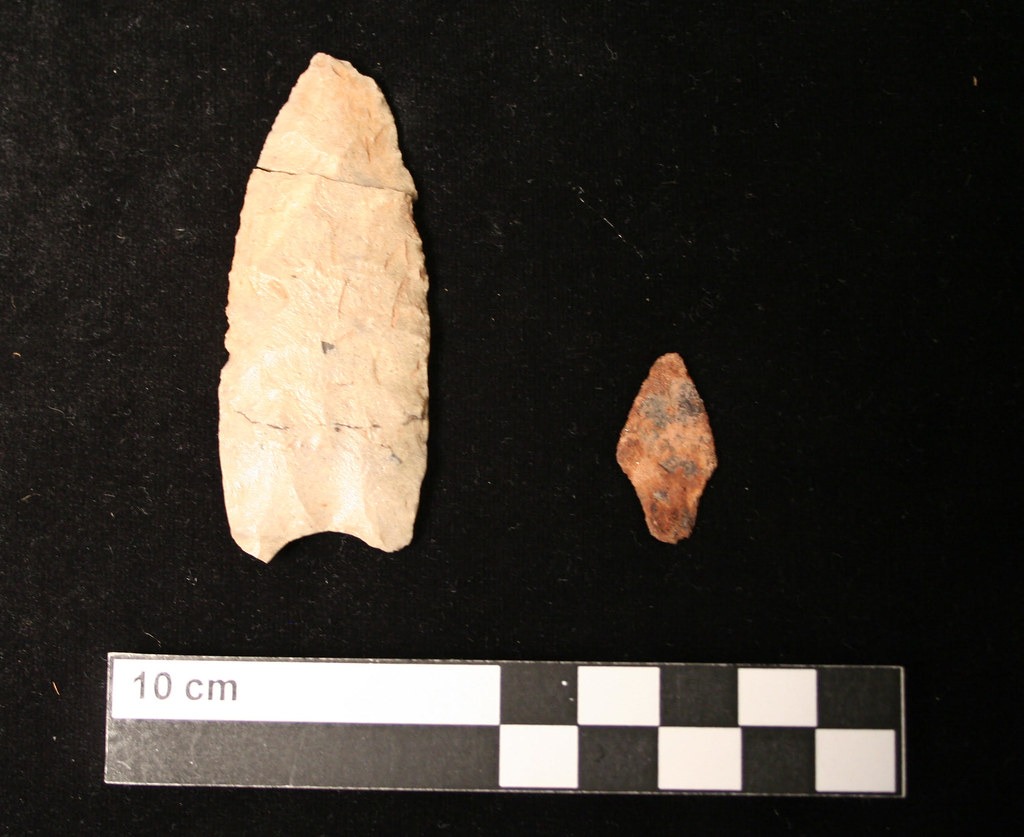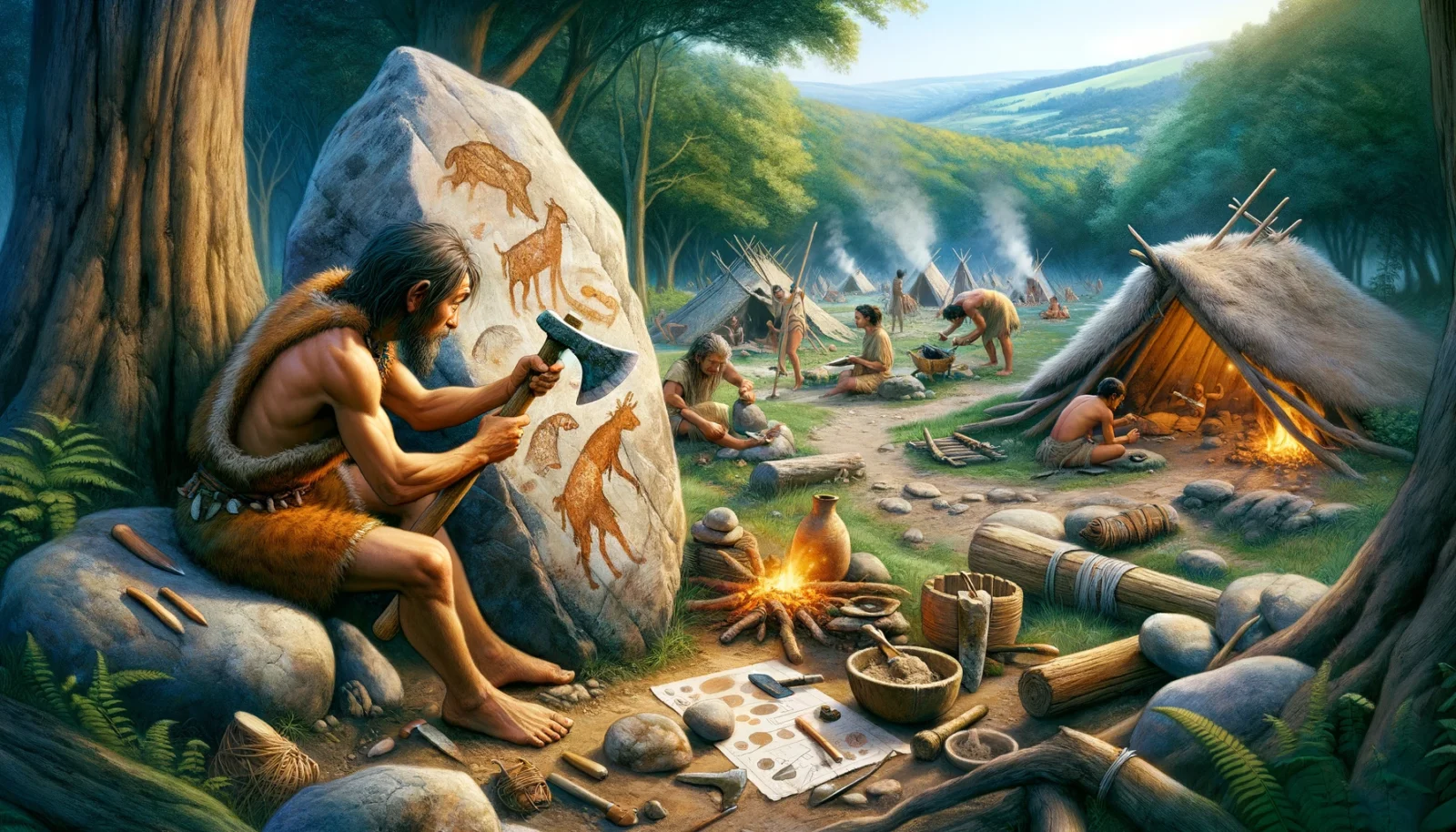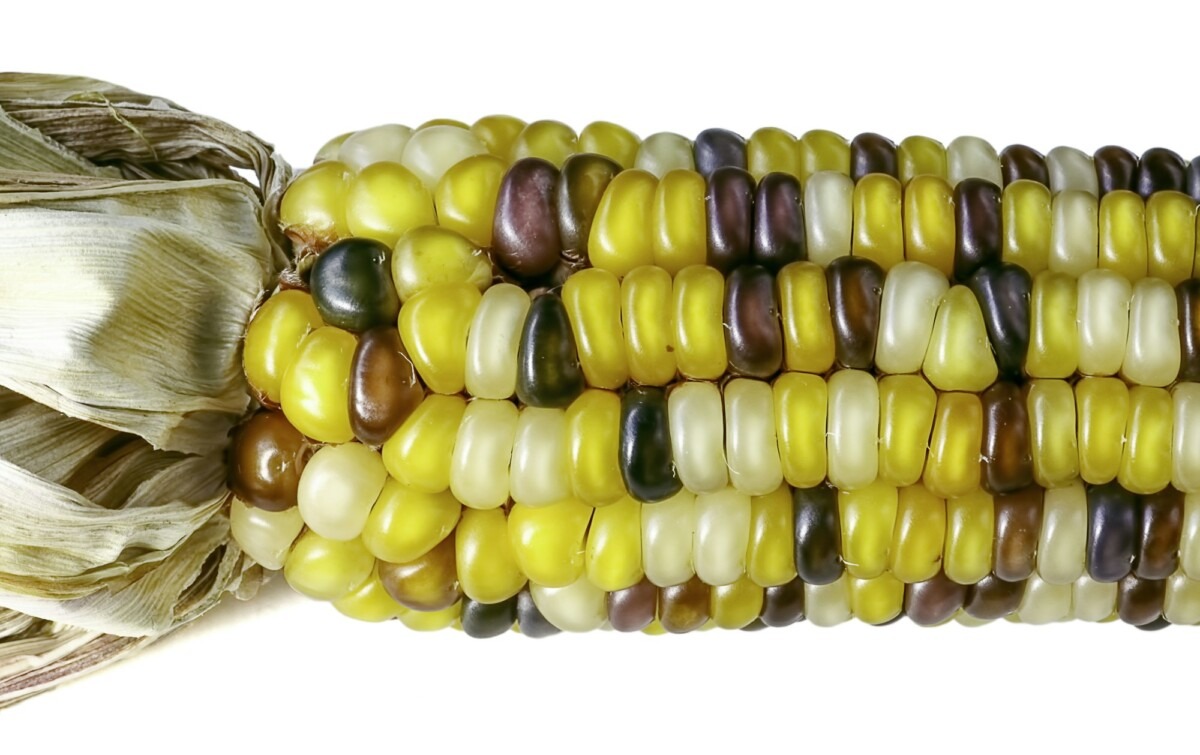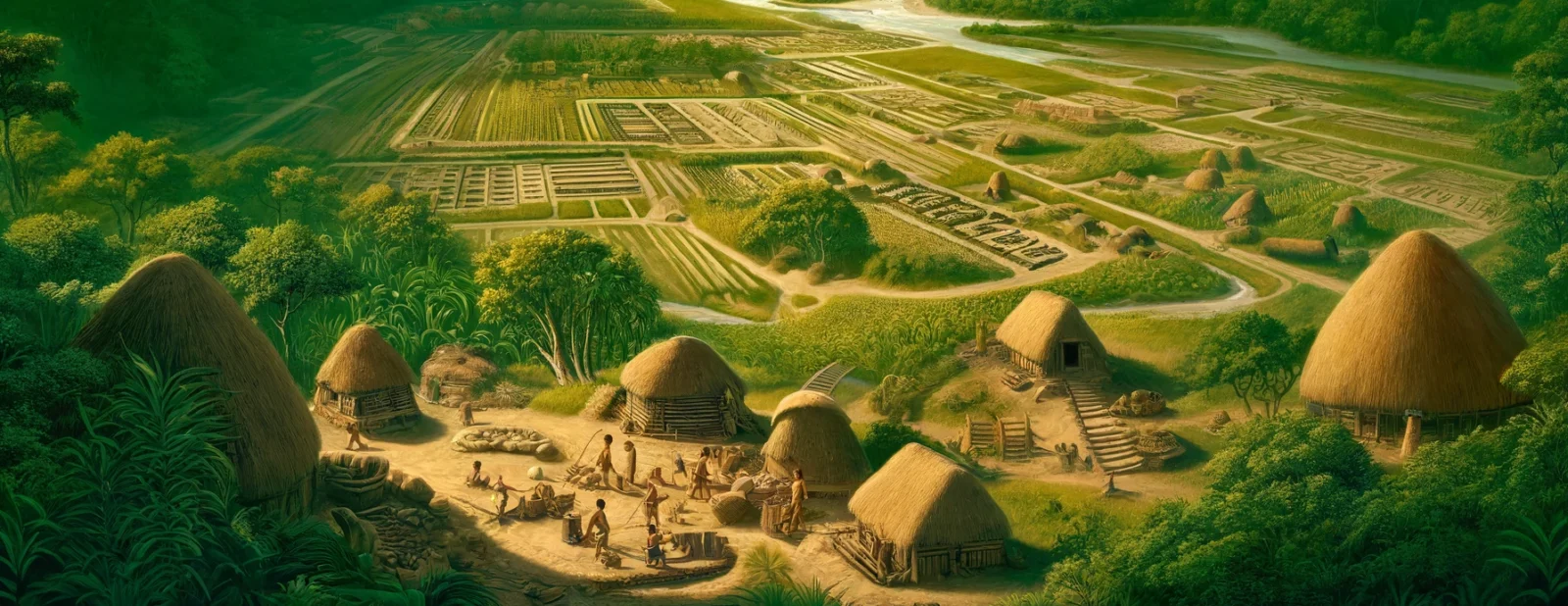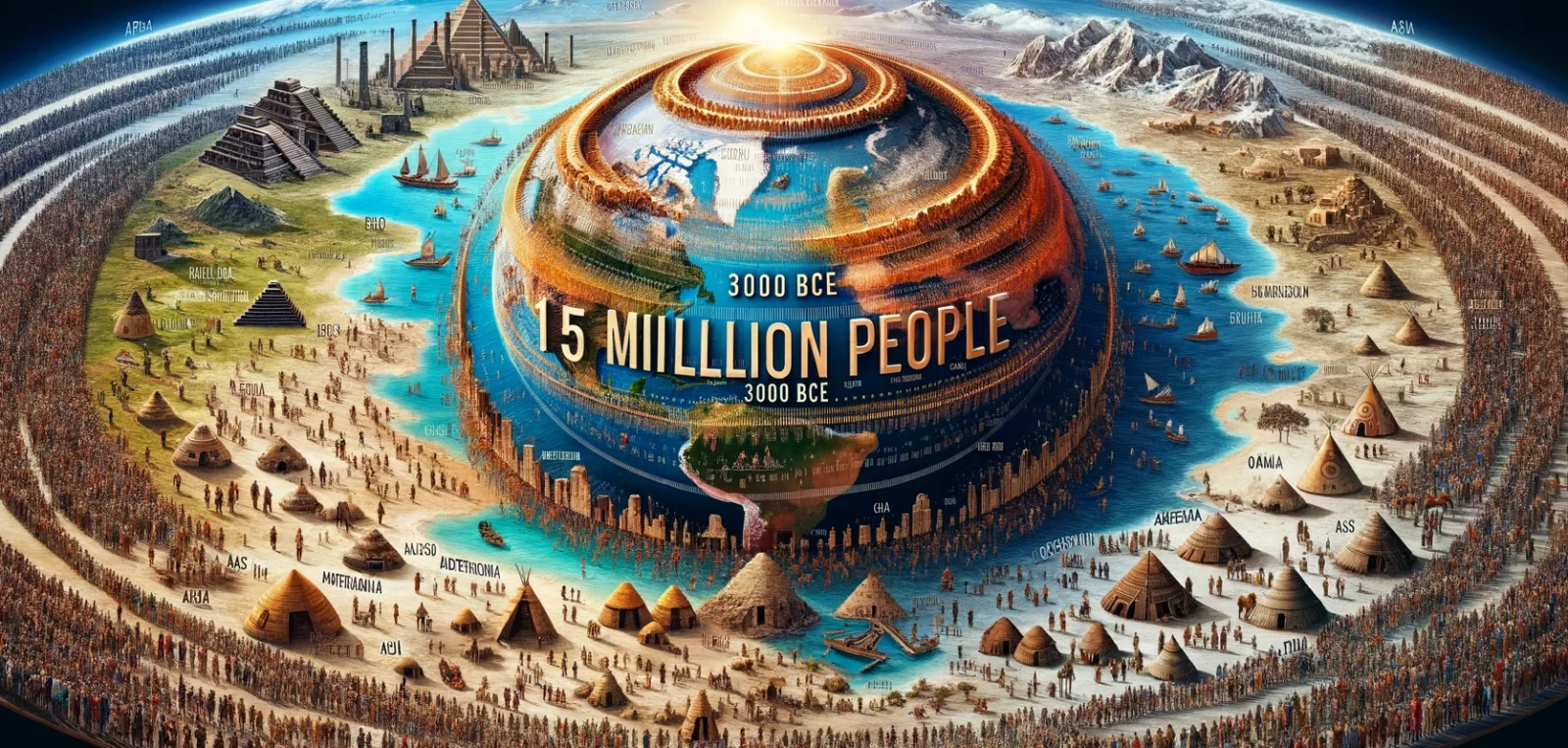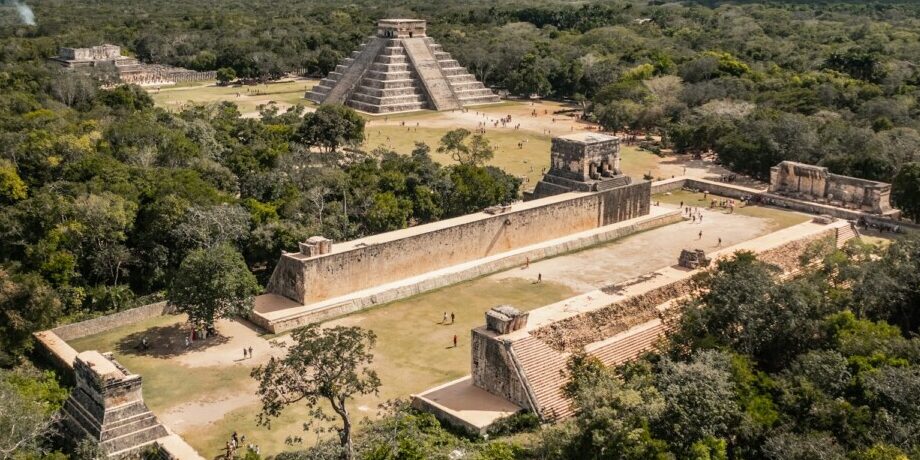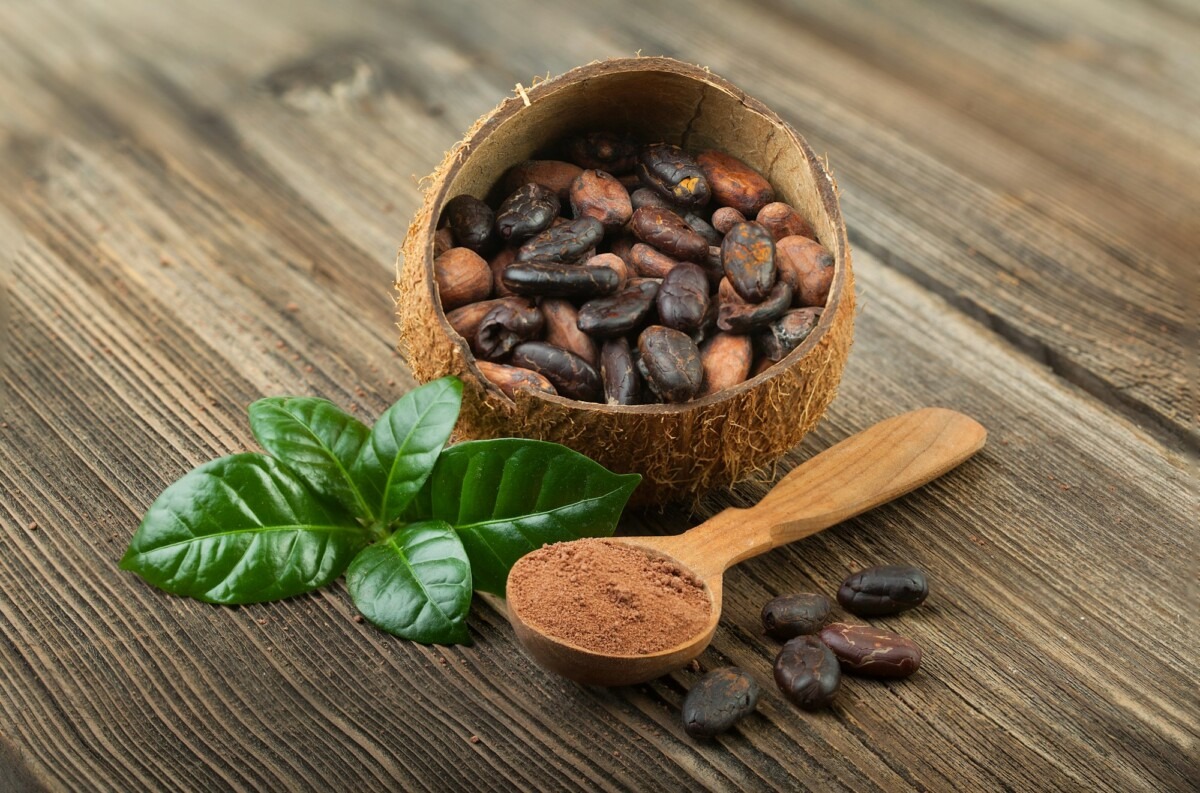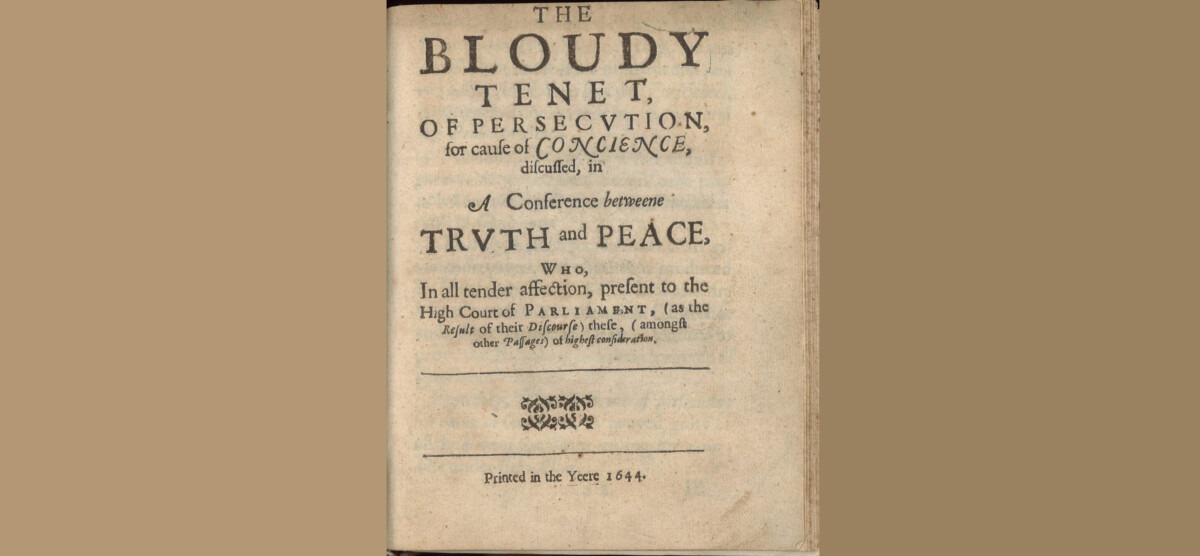Land TL: 1. Africa & Middle East | 2. The Americas | 3. Asia | 4. Europe-Mediterranean | 5. Oceana-Australasia
History by historical land mass is yet another wonderful lens into knowledge. These insights are the backbone to Mike‘s articles and his longer effort books. A part of his lifelong commitment to study. While they are not complete, they are useful.
History of the Lands: The Americas
Cognitive Revolution
50,000 BCE – 70,000 BCE. Population range: 500,000 to 2.5 million.
Given the uncertainties and lack of direct data, the following are speculative estimates.
- Africa-Middle East: 50-60% or 600,000 to 1 million people
Africa, being the origin of modern humans, likely had the highest population density at this time, particularly in Sub-Saharan regions which were more conducive to human habitation due to their climate and available resources. - Asia: 40% or 200,000 to 400,000 people
- Europe-Mediterranean: 10% or 50,000 to 100,000 people
- The Americas: 0.
- Oceana-Australasia: 1% or 10,000 to 15,000 people
The initial colonization of Australia around 50,000 BCE by modern humans involved small, isolated groups who managed to navigate sea crossings, leading to a very low initial population density. The rest of the remote islands of Oceania were among the last to be reached by humans.
A Shared Earth! Neanderthals-Hobbits-Flourensis
Around this time, Homo sapiens shared the Earth with other hominin species. Neanderthals were still widespread in Europe and parts of western Asia. In Asia, particularly on the islands of Indonesia, Homo floresiensis, often referred to as the “Hobbit” due to their diminutive stature, survived until about 50,000 years ago. Additionally, Denisovans, a less visually documented but genetically distinct group, also roamed Eurasia, leaving behind a genetic legacy that persists in modern humans, particularly among populations in Melanesia.
The sea offers tremendous resources and stability. The rising and receding oceans continue to destroy the homes of many. How many unknown cultures in our vast history thrived on the coast for millennia?
The site discovered off the coast of Cuba, also known as the “Cuban Underwater Pyramids,” includes pyramid-like structures and other geometric formations identified using sonar and underwater robots by the research team led by Paulina Zelitsky and Paul Weinzweig. This site, submerged at a depth of around 650 meters, has sparked debate and speculation about its origins, with some suggesting it could be remnants of an ancient civilization dating back more than 50,000 years, while others argue it might be a natural geological formation. Further research is needed to uncover the true nature of these intriguing structures.
Earliest Known Semi-Permanent Settlement in the Americas: Located in the lush landscapes of southern Chile, Monte Verde marks one of the earliest known human settlements in the Americas. Dating back to around 14,800 years ago, this site provides compelling evidence of early human ingenuity and adaptability far from the commonly accepted Eurasian cradles of civilization.
The archaeological remains at Monte Verde reveal a picture of a well-established community, whose inhabitants constructed semi-permanent structures using local materials such as wooden stakes and animal hides, combined with an array of insulating local vegetation. This level of architectural development suggests a shift from nomadic lifestyles to more settled, albeit seasonally influenced, habitation patterns.
Monte Verde is distinguished not only by its age but also by the variety of artifacts discovered on site, including tools, remnants of wooden structures, and evidence of medicinal plant use, indicating a sophisticated understanding of the local environment. The presence of these items points to a diversified economy, with a blend of hunting, gathering, and possibly early forms of plant processing that would precede true agriculture.
This settlement reflects a significant phase in human migration and adaptation, showcasing how early peoples in the Americas were able to create enduring communities in challenging new landscapes. Monte Verde stands as a testament to the resilience and resourcefulness of these early Americans, highlighting a pivotal moment in the march of civilization across continents.
Significance: Monte Verde challenges previous conceptions about the timing and progress of human settlements in the New World, pushing back the dates of human presence in the Americas and showing an advanced level of social and technological development long before the widespread adoption of agriculture. This site helps us understand the complexity of early human societies and their capacity to adapt to and thrive in diverse and distant environments.
Imagined Image: Monte Verde site around 14,800 BCE showing a thriving early human settlement in a lush forested environment, with semi-permanent structures and a community engaged in daily activities.
In what is now the United States, the Clovis culture, named after distinctive stone tools found near Clovis, New Mexico, represents one of the earliest known sophisticated societies in the Americas. Dating back to around 13,000 BCE, the Clovis people are believed to be among the first inhabitants of the continent, crossing the Bering Land Bridge from Siberia into Alaska during the last Ice Age. Their technology, characterized by finely crafted spear points, indicates advanced hunting strategies and social organization. The Clovis culture played a crucial role in the peopling of the Americas, setting the stage for thousands of years of diverse indigenous civilizations.
Late Stone Age
Mesolithic Period: 10,000 BCE – 6000 BCE.
- Africa-Middle East: 30% or 1.2 million peopleg
- Asia: 40% or 1.6 million people
- Europe-Mediterranean: 15% or 600 thousand people
- The Americas: 10% or 400 thousand people
- Oceana-Australasia: 5% or 200 thousand people
In the highlands of Mexico, the story of maize, or corn, begins with its ancestor, teosinte. Through centuries of selective breeding, Indigenous peoples transform this humble grass into corn.
Earliest known agrarian society in the Americas zone: In Oaxaca, Mexico, the site of Guilá Naquitz provides evidence of early plant domestication, particularly of squash, around 8000 BCE, with subsequent developments including maize and beans.
Imagined Image: An early agrarian society of Oaxaca, Mexico, circa 7900 BCE. It showcases small, temporary shelters, with indigenous people engaged in early farming practices.
Big History Thresholds: 1=Big Bang | 2=Stars&Galaxies | 3=Chemicals | 4=Solar System | 5=First Life | 6=TI | 7=Agrarian | 8=Science
Agriculture: The 7th threshold is agrarian societies which allowed for complex structured urban cities.
Stone Copper Age
Chalcolithic Period: 3,000 BCE – 500 BCE.
- Africa-Middle East: 36% or 5 million people
Early civilizations include Egypt and Mesopotamia with a relatively higher population density. - Asia: 36% or 5 million people
Early civilizations include Indus Valley and ancient China. They saw early urban development and agriculture which supported larger populations. - Europe-Mediterranean: 14% or 2 million people
Smaller due to the varied climatic conditions and the later development of agriculture compared to the Middle East. - The Americas: 7% or 1 million people
More sparsely populated with many diverse hunter-gatherer communities and early agricultural societies, particularly in regions like Mesoamerica. - Oceana-Australasia: 7% or 1 million people
These regions were among the least densely populated, with scattered tribal groups primarily leading hunter-gatherer lifestyles.
The Fuente Magna Bowl, discovered in 1950 near Lake Titicaca, Bolivia, is a large stone vessel with intricate carvings. Unearthed by a local farmer, the bowl was later donated to a small local museum and eventually transferred to the Museum of Precious Metals in La Paz. The bowl features engravings that some claim resemble ancient Sumerian cuneiform and other proto-scripts. This artifact’s intricate carvings have sparked significant interest due to their apparent similarity to writing systems used thousands of miles away in ancient Mesopotamia.
It might be a modern forgery, but if not, the Fuente Magna Bowl is significant because it might point to a Sumerian-South America connection or to earlier proto-writing. Experts like Dr. Clyde Ahmed Winters have proposed that the inscriptions are Proto-Sumerian, suggesting possible ancient transoceanic contact. However, many scholars are skeptical, citing inconsistencies in the script and questioning the bowl’s provenance. Some suggest that the markings might hint at an earlier form of writing, indicating a longer and more complex path to the development of written language than currently understood. This possibility could have profound implications, suggesting that the origins of writing might be more widespread and interconnected than previously thought.
The Maya civilization, emerging around 2600 BCE in what is now Mexico, Belize, Guatemala, and Honduras, represents one of the most complex societies of ancient America. Renowned for their achievements in mathematics, astronomy, art, and architecture, the Maya developed a sophisticated calendar system and constructed towering pyramids and cities that blended harmoniously with the surrounding landscape. The Classic Period (250–900 CE) saw the peak of Maya civilization, with large city-states engaged in intricate political, economic, and military networks. The Maya’s contributions to knowledge, particularly their understanding of the cosmos and time, remain a lasting legacy of indigenous American ingenuity.
The Mayan civilization lasted nearly 3 millennia. It began to take shape in the Yucatan region of Mexico, Guatemala, Belize, and Honduras around 2000 BCE, with evidence of early agricultural communities. However, prior to embracing farming, this community was in the area for at least a few centuries. By 250 CE, they had established major cities like Tikal and Copán, featuring impressive pyramids, palaces, and advanced astronomical systems. The Mayans developed a complex writing system and made significant contributions to mathematics and calendar-making. The civilization experienced a decline starting in the 9th century CE, with many cities abandoned. The Mayan culture persisted, however, through smaller communities and continues to influence descendants today.
In the tropical rainforests of Mesoamerica, the ancient Olmecs unlock the secrets of the cacao pod. By fermenting, roasting, and grinding the seeds, they create the bitter beverage chocolate. This divine elixir lays the foundation for chocolate’s enduring legacy, cherished by the Mayans and Aztecs as a ceremonial drink, a currency, and a medicine.
The Olmec civilization, often considered the “mother culture” of Mesoamerica, formally emerged around 1600 BCE based on when they embraced farming. They primarily emerged in the tropical lowlands of present-day southern Mexico. Known for their colossal stone heads and sophisticated art, the Olmecs developed early forms of writing and urban organization. Their major centers, such as San Lorenzo and La Venta, thrived as political and religious hubs. The Olmec influence waned around 400 BCE, but their cultural and technological innovations profoundly impacted subsequent Mesoamerican civilizations.
Earliest known writing in the Americas zone.
The Olmec civilization flourished in what is now the southeastern part of Mexico from around 1500 BC to about 400 BC. The Olmecs are often referred to as the “Mother Culture” of Mesoamerica, influencing later civilizations like the Maya and the Aztecs.
The Cascajal Block artifact, dated to around 900 BCE, bears 62 symbols carved into it that some researchers believe represent the earliest form of writing in the New World.
The Inca civilization only lasted a few centuries from about 1200 CE. In that short period it became the largest empire in pre-Columbian America. It emerged in the Andean region of present-day Peru. The early Incas established the city of Cusco as their capital. They expanded rapidly, by the 15th century they developed an extensive network of roads, sophisticated agricultural terraces, and monumental architecture, such as Machu Picchu. They developed a system of record-keeping using quipus (knotted strings) and a calendar based on the movements of the sun and moon. The Inca Empire fell to Spanish conquistadors in 1533, leading to its dissolution, but the cultural legacy endures among Andean communities.
The Mayflower Compact set out rules for self-governance for the English settlers who traveled to Colonial America aboard the Mayflower ship in 1620. Of the 102 passengers aboard the Mayflower only 41 were Pilgrims. It was this minority body that established the rules for which they tried to force on all. The majority of passengers disagreed with and fought against the compact for many years–a rough start to American democracy. The document was signed by the 41 pilgrims, non of the other white male adults called “strangers” by the pilgrims signed it.
Mike Prestwood Note: One of the Pilgrims and signers of the Mayflower Compact was my direct ancestor Richard Warren (my 10th great grandpa on my mom’s mom side).
Homann-Rudisill Note: My wife Lisa Jane Unsicker is a direct descendent of 4 Mayflower passengers John Tilley, his wife, and daughter are direct ancestors. Also, John Howland, the future husband of 13 year old Elizabeth Tilley is also a direct ancestor of Lisa’s.
In 1644, Williams published The Bloudy Tenent of Persecution. Historians consider it his most famous work. He wrote Bloudy after arriving in London in midsummer 1643. It was on sale by July 15, 1644. It is a fierce attack on religious and political intolerance in both Old England and New. He advocated for free thought and belief because he felt that punishing those that did not believe was not part of his faith and government should be separate from religion. Roger advocated for a “hedge or wall of Separation between the Garden of the Church and the Wilderness of the world” in order to keep the church pure. His ideas raised questions and challenges but his ideas endured over time.
Subtitle: A Briefe Discourse concerning that name Heathen
Not only did Roger Williams write the first book on the local native americans, he supported them in ways that were 400 years ahead of his time.
In 1645 Roger Williams wrote this small 25 page book. In it he documented that the English and Dutch refer to native americans as heathens and not always just to mean non-christians.
The Great Quaker Debates occurred in 1672 on Aug 9, 10, 12, and 17 of August. Although Roger Williams welcomed those with differing opinions, he relished in the opportunity to present his viewpoint. Famously, in 1672 at the age of about 69 or 70, he rowed alone, all night from Providence to Newport to debate the Quakers at 9AM. The first session of the debate was held on the 9th, 10th, and 12th of August 1672 in Newport. His brother Robert was then a school master at Newport and helped with the debates. On the 17th, the debate continued one more day in Providence. Many attended both sessions. Roger presented 14 arguments during the debate.
Four years later he published a book on the debates titled, “George Fox Digg’d out of his Burrowes”.
Next >>
Land TL: 1. Africa & Middle East | 2. The Americas | 3. Asia | 4. Europe-Mediterranean | 5. Oceana-Australasia



